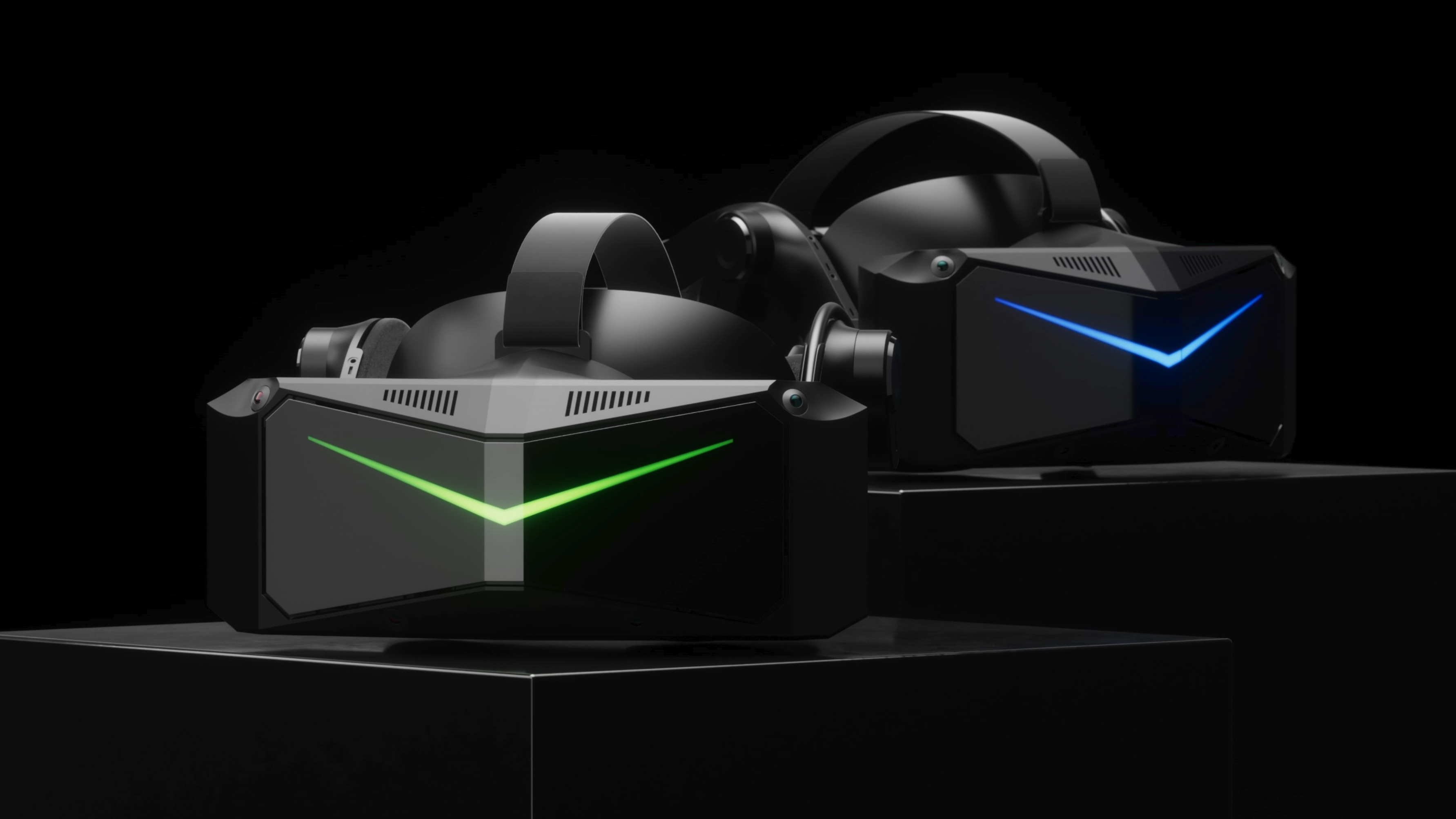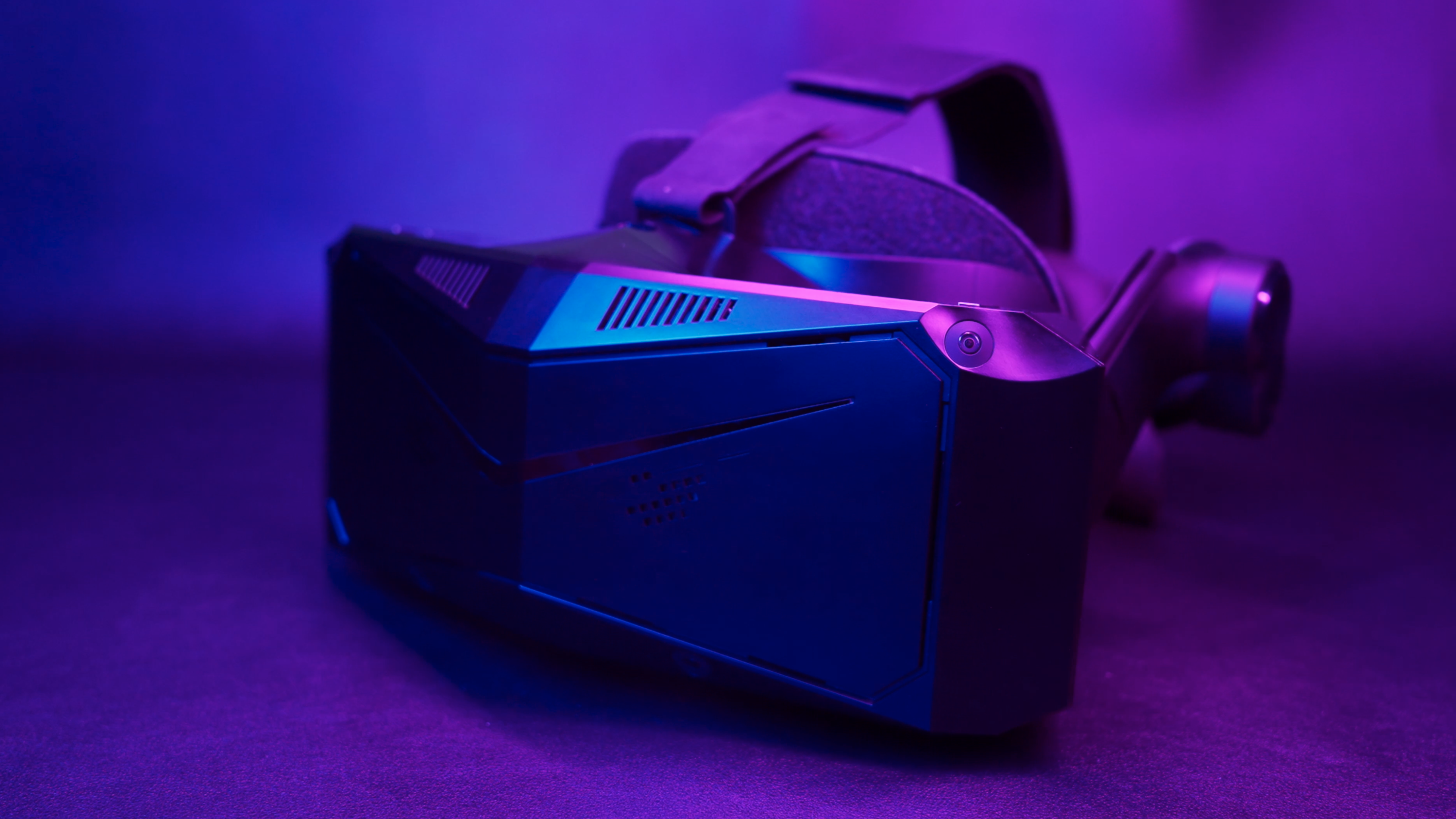Pimax’s new VR headset can swap between QLED and OLED displays – but the Vision Pro beats it in one important way
The Pimax Crystal Super isn't a complete upgrade on the original

Pimax has unveiled two new VR headsets with the top of the line Pimax Crystal Super seemingly set to put the best VR headsets to shame – even the Apple Vision Pro – with some phenomenal specs. It also has one of most unique display features we’ve ever seen: you can swap between an OLED and QLED display engine to get the most out of your virtual experience.
Are you playing a frightening horror adventure that has you exploring dark spaces filled with monsters? Then an OLED screen’s excellent dark contrast will be just what you need. If you’re instead kicking back with a vibrant VR social app then you could swap in the QLED screen to be dazzled by the colors it can produce.
No matter which screen type you choose, the Pimax Crystal Super will deliver 29.5 million pixels across its dual, 3,840 x 3,840 pixels per eye displays, each with 200 nits of brightness. The QLED display system has a max refresh rate of 120Hz and uses glass aspheric lenses, while the OLED one has a 90Hz max refresh rate and uses less bulky pancake lenses.
You’ll also find neat features like eye-tracking, dynamic foveated rendering, and inside-out tracking – so there’s no need for lighthouses.
As you'd expect, this swappable display design doesn’t come cheap. If you want a Pimax Crystal Super with both the OLED and QLED display engines you’ll be paying $2,399 (around £1,925 / AU$3,700) for the headset. Alternatively if you’d rather get just one type of display the QLED model will set you back $1,799 (around £1,450 / AU$2,800 ) while the OLED version costs $1,999 (around £1,600 / AU$3,100).
No precise release date has been given yet but Pimax estimates the Crystal super will launch in Q4 2024 (so October, November or December).

If this is all still too much to pay for a VR headset – especially one that requires you to have a similarly high-end PC gaming rig so you can get the most out of your headset’s capabilities – or you want a headset that’ll arrive sooner, you could instead opt for the Crystal Light.
Sign up for breaking news, reviews, opinion, top tech deals, and more.
The crystal light boasts less sharp displays – boasting just 2,880 x 2,880 pixels per eye – though its QLED screen can get up to 120Hz. However, it uses aspheric lenses so will be bulkier than headsets using pancake lenses, and it lacks eye-tracking, and dynamic foveated rendering capabilities.
The upshot is it’s a heck of a lot cheaper starting at just $699 (around £550 / AU$1,100) and it should launch in May according to Pimax.
As impressive as these news Pimax headsets sound, I'm disappointed that they’re locked into the PCVR ecosystem, and aren’t at least adopting Pimax’s own wireless tech.
Analysis: Several steps forward, several steps back
A big issue with PCVR headsets are the cables that tether you to a PC – or a console in the case of PSVR 2 – that limit your movement, and that you can catch yourself on as your flail about in virtual reality.
However, as we’ve seen from the displays in Pimax’s headset, the advantage of PCVR is you can enjoy a super high level of graphics and performance that outshines standalone devices – like the Meta Quest 3 and even Apple Vision Pro (provided you have a great PC, that is).
This is where a wireless module can come in like the Pimax Crystal 60G Airlink device as they allow you to enjoy PCVR without being tethered. We’ve known that this device has been coming for a while – it was demoed at CES 2024 already – but we finally know exactly what the Crystal 60G can do with official specs straight from Pimax.
Specifically it boasts wireless PCVR with a 2,880 x 2,880 pixel resolution per eye, 90Hz max refresh rate, and “ultra low latency” – though exactly what this means hasn’t been revealed.

Unfortunately, neither of Pimax’s new headsets – the Crystal Super or Crystal Light – will support the 60G Airlink module.
What’s more, they strip out the batteries and Qualcomm Snapdragon XR2 chipset that the base Pimax Crystal headset included, which allowed it to support both wireless PCVR and a standalone VR experience.
To this end, you might find the base Crystal model is the better option for you – or a non-Pimax model like a Quest 3 or Apple Vision Pro – thanks to the versatility offered by a standalone headset. Not only are you freer to use the headset wherever you want but also, with the exception of the Vision Pro, you can very easily use these headsets for wireless VR and for wired PCVR – giving you the best of both worlds.
This versatility is one of the reasons why Quest headsets have been topping the Steam VR usage charts for years.
Considering how impressive Pimax’s machines are I’d love for it to have kept pushing into the world of standalone VR. Improving its software catalogue or partnering with a company with a great VR OS to jumpstart its app store – ideally the amazing Quest ecosystem, though are others out there from the likes of HTC – would also have been great.
I’ll have to try the latest Pimax headset out for myself before giving my final verdict, but as it stands I don’t think these are VR gadgets I can see most people using – nor do I think most people should use them. Which is a real shame because otherwise I feel Pimax’s machines could be a slam dunk on pricey competitors like the Vision Pro – for now, though, I feel relative newcomer Apple has Pimax’s Crystal Super beat, on paper.
You might also like

Hamish is a Senior Staff Writer for TechRadar and you’ll see his name appearing on articles across nearly every topic on the site from smart home deals to speaker reviews to graphics card news and everything in between. He uses his broad range of knowledge to help explain the latest gadgets and if they’re a must-buy or a fad fueled by hype. Though his specialty is writing about everything going on in the world of virtual reality and augmented reality.